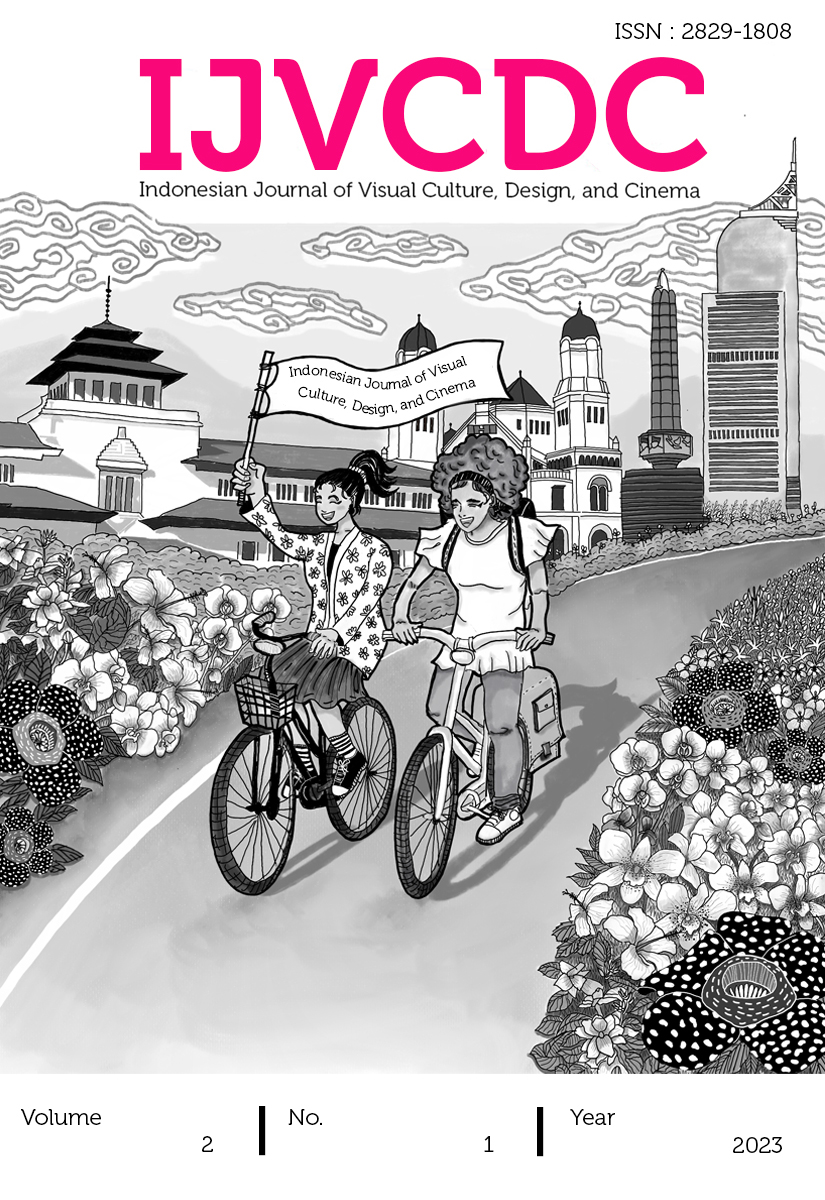Adolescent Responses to the Social Campaign Video on Kemdikbud.RI Account about Cyber-sexual Harassment
DOI:
https://doi.org/10.21512/ijvcdc.v2i1.8239Keywords:
social campaign, persuasive communication, AISAS, social media, cyber-sexual harassmentAbstract
The primary purpose of a social campaign is to change a person's behavior or attitude regarding some social issues under the message conveyed by the communicator. It is described as persuasive communication. Furthermore, this study aimed to analyze the video content of the #GerakBersama social campaign from the cerdasberkarakter.kemdikbud.ri account about cyber sexual harassment and the audience's responses to the campaign related to awareness of this new phenomenon on social media. This study used mixed methods with data collection through in-depth interviews and surveys to obtain a thorough understanding from audiences and advertising experts regarding video advertising messages. The authors used Aristotle's theory of persuasion communication with three main pillars, namely ethos, pathos, logos, and the AISAS communication model to analyze the responses of the campaign video. These theories were processed and modified to obtain conclusions about the target audience's response to social advertisement videos regarding cyber-sexual harassment and to identify persuasive communication strategies in social campaigns as a reference for advertising professionals and academics in responding to new social problems in online media. The study results were also expected to reference further communication strategies and understanding related to persuasive communication in advertising and social campaigns.
References
Andrews, M. (2008). Art of Visual Persuasion Its psychology, its semiotics, its rhetoric Social
Campaigns. 10–11.
Arafa, A. E., Elbahrawe, R. S., Saber, N. M., Ahmed, S. S., & Abbas, A. M. (2017). Cyber sexual
harassment: a cross-sectional survey over female university students in Upper Egypt.
International Journal Of Community Medicine And Public Health, 5(1), 61.
Aristotle (384-322 BC) “The Art of Rhetoricâ€.
Asosiasi Penyelenggara Jasa Internet Indonesia. (2017). Penetrasi & Profil Perilaku Pengguna Internet Indonesia. Apjii, 51.
Astuti, S. W., Pradoto, D., & Romaria, G. (2019). Victim Blaming Kasus Pelecehan Seksual (Studi
Netnografi Pelecehan Seksual Terhadap Via Valen di Instagram) Victim Blaming Sexual
Harassment Cases (Netnographic Study of Sexual Harassment Against Via Valen on
Instagram). Promedia, 5(1), 145–165.
Creswell, J. W. (2014). Research Design: Qualitative, Quantitative, and Mixed Methods Approaches (4th edition; V. Knight, ed.). Sage publications.
Fairchild, K., & Rudman, L. A. (2008). Everyday stranger harassment and women’s objectification. Social Justice Research, 21(3), 338–357.
Flew & Terry (2002). New Media: An Introduction. New York: Oxford University Press.
GarcÃa Reyes, L. E. (2013). A study on Aristotle Rhetoric. Journal of Chemical Information and
Modeling, 53(9), 1689–1699.
Harvey, K. (2014). Social Media, Definition and Classes of. Encyclopedia of Social Media and Politics, January 2014. https://doi.org/10.4135/9781452244723.n485.
Kekerasan Berbasis Gender Online Meningkat Saat Pandemi: Apa Sebabnya? CewekBanget. Retrieved from: https://cewekbanget.grid.id/read/062592326/kekerasan-berbasisgender-online-meningkat-saat-pandemi-apa-sebabnya.
Komnas Perempuan. (2017). Naskah Akademik Rancangan Undang-Undang Republik Indonesia Tentang Penghapusan Kekerasan Seksual (Cetakan 1). Komnas Perempuan.
Madhavilatha, M. D., & Madhumita, G. (2016). A study on Aristotle Rhetoric. British Journal of
English Linguistics, 4(9), 1689–1699.
Meilyana, E. (2018). AISAS Model – Global Business Marketing. Retrieved from:
https://bbs.binus.ac.id/gbm/2018/08/13/aisas-model/#:~:text=Berdasarkan.
Perloff, R.M. (2003). The Dynamics of Persuasion: Communication and Attitudes in the 21st Century (2e druk), Mahwah: Erlbaum.
Puspasari, N. A., & Hermawati, T. (2021). Strategi Komunikasi Pemasaran Melalui Media Sosial.
Jurnal Komunikasi Massa, 5(1), 1–8. https://ejournal.poltektegal.ac.id/index.php/siklus/article/view/298%0Ahttp://repositorio. unan.edu.ni/2986/1/5624.pdf%0Ahttp://dx.doi.org/10.1016/j.jana.2015.10.005%0Ahttp://www.biomedcentral.com/1471-2458/12/58%0Ahttp://ovidsp.ovid.com/ovidweb.cgi?T=JS&P.
Teng, S., Wei, K., & Wei, W. (2014). Persuasive Communication : A Comparison of Major Attitude- Behavior Theories in a Social Media Context. 82–89.
SAFEnet. (2019). Memahami dan Menyikapi Kekerasan Berbasis Gender Online: Sebuah Panduan. 2, 20.
SAFEnet. (2021). Laporan Situasi Hak-hak Digital Indonesia 2020 Represi Digital di Tengah Pandemi. Denpasar.
Santoso, S. (2019). Perancangan Kampanye Sosial Edukasi Stop Perilaku Pelecehan Verbal di
Lingkungan Pekerja Kantor Milenial. 01, 1–7.
Schenk, S. (2008). Cyber-Sexual Harassment: The Development of the Cyber-Sexual Experiences Questionnaire. McNair Scholars Journal, 12(1), 82–91.
Downloads
Published
How to Cite
Issue
Section
License
Copyright (c) 2023 Karinda Amilia Rumahorbo, Intan Rizky Mutiaz

This work is licensed under a Creative Commons Attribution-NonCommercial-ShareAlike 4.0 International License.







